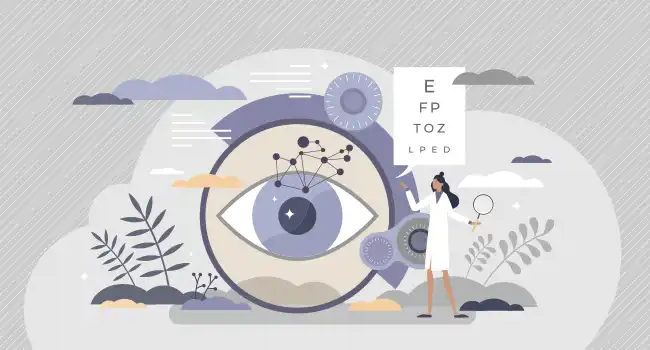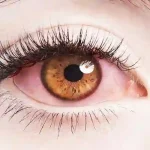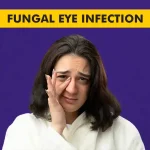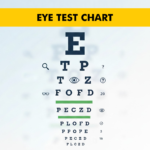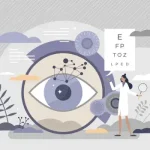Retinitis Pigmentosa (RP) is a group of inherited eye disorders that affect the retina, the light-sensitive tissue at the back of the eye. It causes a gradual loss of vision, usually starting with night blindness and progressing to tunnel vision or even complete blindness in some cases. It is important to note that the progression and severity of RP can vary widely among individuals.
In this blog, we will explore what happens when you will be diagnosed with it including Retinitis Pigmentosa symptoms, causes, types, methods of diagnosis, management strategies, and preventive measures.
What Exactly Is This Retinitis Pigmentosa?
Retinitis Pigmentosa is a genetic disorder that affects the retina, causing a gradual loss of vision. It is characterized by the degeneration of the retinal cells called photoreceptors, which are responsible for capturing light and transmitting visual information to the brain via optic nerver. As these cells deteriorate over time, individuals with RP experience a decline in their visual acuity and peripheral vision.
The term ‘Retinitis Pigmentosa’ refers to the presence of pigment deposits in the retina, which can be observed during an eye examination. RP is typically an inherited condition, meaning it is passed down from parents to their children through genetic mutations. While RP primarily affects the retina, it can also have secondary effects on other parts of the eye, such as the lens, vitreous, and optic nerve.
Retinitis Pigmentosa Causes
Retinitis Pigmentosa is primarily caused by genetic mutations that affect the function of the photoreceptor cells in the retina, mainly rods. These mutations can disrupt the normal processes involved in capturing and processing light, leading to the degeneration of the photoreceptor cells over time.
There are several genes that have been associated with the development of RP. Mutations in these genes can be inherited from one or both parents, or they can occur spontaneously during the individual’s lifetime. The specific gene mutations involved can vary among individuals with RP, which contributes to the variability in the presentation and progression of the condition.
In addition to genetic factors, there may be other factors that can influence the development and progression of RP. These factors include environmental factors, oxidative stress, and metabolic abnormalities. However, the exact role of these factors in the development of RP is still being studied.
Retinitis Pigmentosa Symptoms
The Retinitis Pigmentosa symptoms can vary among individuals, but they generally involve a gradual decline in vision over time. The most common symptoms include:
Night blindness: Difficulty seeing in low-light conditions, such as at dusk or in dimly lit rooms.
Difficulty with contrast and glare: Problems distinguishing objects in low-contrast situations or in the presence of bright lights.
Slow adjustment to changes in lighting conditions: The eyes may take longer to adapt when moving from a bright environment to a dark one, or vice versa.
Color vision abnormalities: Some individuals with RP may have difficulty distinguishing certain colors or experience a loss of color perception.
Tunnel vision: A narrowing of the visual field, where the peripheral vision is progressively lost, resulting in a constricted central field of vision.
Central vision loss: In advanced stages of RP, the central vision may also be affected, leading to difficulty with tasks that require fine detail, such as reading or recognizing faces.
You can also read blog on Can Color Blindness Be Dangerous?
It is important to note that the progression and severity of these symptoms can vary widely among individuals. Some people may experience a slow decline in vision over several decades, while others may rapidly lose their sight within a few years.
How Common Is Retinitis Pigmentosa?
Retinitis Pigmentosa is a relatively rare condition, affecting approximately 1 in 4,000 people worldwide. It is estimated that around 1.5 million individuals are living with RP globally.
Although RP can affect people of all ages, it is typically diagnosed during childhood or adolescence. The age of onset can vary, with some individuals experiencing symptoms in early childhood, while others may not develop symptoms until adulthood.
RP can occur in both males and females and affects all ethnic and racial groups equally. However, the specific genetic mutations associated with RP can vary among different populations.
Types of Retinitis Pigmentosa
Retinitis Pigmentosa is a heterogeneous condition, meaning it can present in different ways and have various underlying genetic causes. There are several types and subtypes of RP, including:
Typical Retinitis Pigmentosa: This is the most common form of RP, characterized by night blindness, tunnel vision, and progressive loss of peripheral vision.
Usher Syndrome: This is a rare genetic disorder that combines RP with hearing loss. It is divided into three types (Usher syndrome type 1, type 2, and type 3), depending on the severity and progression of symptoms.
Leber Congenital Amaurosis: This is a severe form of RP that is usually present from birth or early infancy. It can cause severe visual impairment or blindness.
Other Rare Forms: Retinitis pigmentosa can be associated with other syndromes such as Bardet-Biedl syndrome, Refsum disease, and Alström syndrome.
The specific type of RP an individual has can impact the age of onset, rate of progression, and the specific symptoms experienced.
How Do You Get Your Eyes Checked For Retinitis Pigmentosa?
If you are experiencing symptoms of Retinitis Pigmentosa or have a family history of the condition, it is important to get your eyes checked by an eye care professional. The tests may include:
Visual acuity test: This test measures how well you can see at different distances using an eye chart.
Visual field test: This test evaluates your peripheral vision by having you indicate when you see objects in your side vision while focusing on a central point.
Electroretinogram (ERG): This test measures the electrical responses of your retina to determine the functioning of the photoreceptor cells.
Optical coherence tomography (OCT): This imaging test provides detailed cross-sectional images of the retina, allowing the eye care professional to assess its structure and detect any abnormalities.
Genetic testing: In some cases, genetic testing may be recommended to identify specific gene mutations associated with RP.
Based on the results of these tests, the eye care professional can make a diagnosis and provide appropriate recommendations for management and Retinitis Pigmentosa treatment.
How Is Retinitis Pigmentosa Managed?
While there is currently no cure, there are management strategies and Retinitis Pigmentosa treatment options available to help individuals cope with the condition and maintain their quality of life, such as:
- Low vision aids: These are devices and technologies that can help individuals with RP make the most of their remaining vision. This may include magnifiers, telescopic lenses, electronic devices, and computer software.
- Orientation and mobility training: This type of training helps individuals with RP develop skills and strategies to navigate their environment safely and independently.
- Genetic counseling: Genetic counseling can provide individuals and families with information about the genetic cause of RP, the risk of passing it on to future generations, and available reproductive options.
- Clinical trials and research studies: Participation in clinical trials and research studies can provide individuals with access to potential new treatments and therapies being developed for RP.
- Emotional and psychological support: Living with RP can have a significant impact on an individual’s emotional well-being.
How Can I Prevent Retinitis Pigmentosa?
Currently, there is no known way to prevent the development of Retinitis Pigmentosa or to stop its progression. However, Some preventive measures and lifestyle modifications that may help include:
- Regular eye examinations: Routine eye examinations can help detect any changes in vision and allow for early intervention.
- Protecting the eyes: Wearing protective eyewear, such as sunglasses, can help reduce exposure to harmful ultraviolet (UV) rays and minimize the risk of additional eye damage.
- Healthy lifestyle choices: Adopting a healthy lifestyle, including eating a nutritious diet, exercising regularly, and avoiding smoking, may help support overall eye health.
- Genetic counseling: If you have a family history of RP or are planning to have children, genetic counseling can provide valuable information about the risk of passing on the condition and available reproductive options.
It is important to consult with your healthcare provider or eye care professional for personalized advice and guidance on managing and preventing RP.
Why Centre For Sight?
Centre For Sight is a leading eye care institution dedicated to providing comprehensive and specialized care for individuals with Retinitis Pigmentosa and other retinal diseases. With a team of highly skilled ophthalmologists, state-of-the-art facilities, and advanced diagnostic and Retinitis Pigmentosa treatment technologies, Centre for Sight offers a range of services to diagnose, manage, and support individuals with RP.
FAQs
What are the early symptoms of retinitis pigmentosa?
Early symptoms include night blindness, difficulty seeing in low light, and a gradual loss of peripheral vision.
You can also read on peripheral vision in detail here
How quickly does retinitis pigmentosa progress?
The progression varies; some people experience a slow decline over decades, while others may notice more rapid vision loss.
Are there ways to slow down the progression of retinitis pigmentosa?
Currently, there is no cure, but certain interventions like vitamin A supplementation, wearing sunglasses to protect from UV light, and possibly emerging gene therapies may help slow progression.
What kind of doctor should I see for retinitis pigmentosa?
You should see an ophthalmologist, preferably one who specializes in retinal diseases.
How do people with retinitis pigmentosa see?
People with retinitis pigmentosa typically see through a narrowing field of vision, often described as “tunnel vision,” and may struggle with low-light conditions.
Can retinitis pigmentosa be cured?
There is no cure for retinitis pigmentosa at present, but research is ongoing, and some treatments may help manage the condition.
Who is most likely to get retinitis pigmentosa?
Retinitis pigmentosa is often inherited, so those with a family history of the condition are at higher risk. It affects both males and females.You can also read more about Inherited Retinal Dystrophy.
